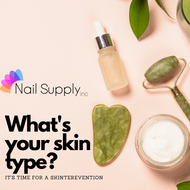It's time for a SKINTERVENTION! Skin Type
Dec 15th 2021
Even before I became an esthetician, I was very interested in skin care. I kept up with the latest trends and all of the different products. Did I implement them every day in the correct way? No probably not, but I was already hooked. If you’re just getting started in this field or even just planning on starting your own skin care routine, you know that there is SO MUCH that you have to take into account before you can just go to town and pick a product. And this pertains both to your clients’ skin as well as your own.
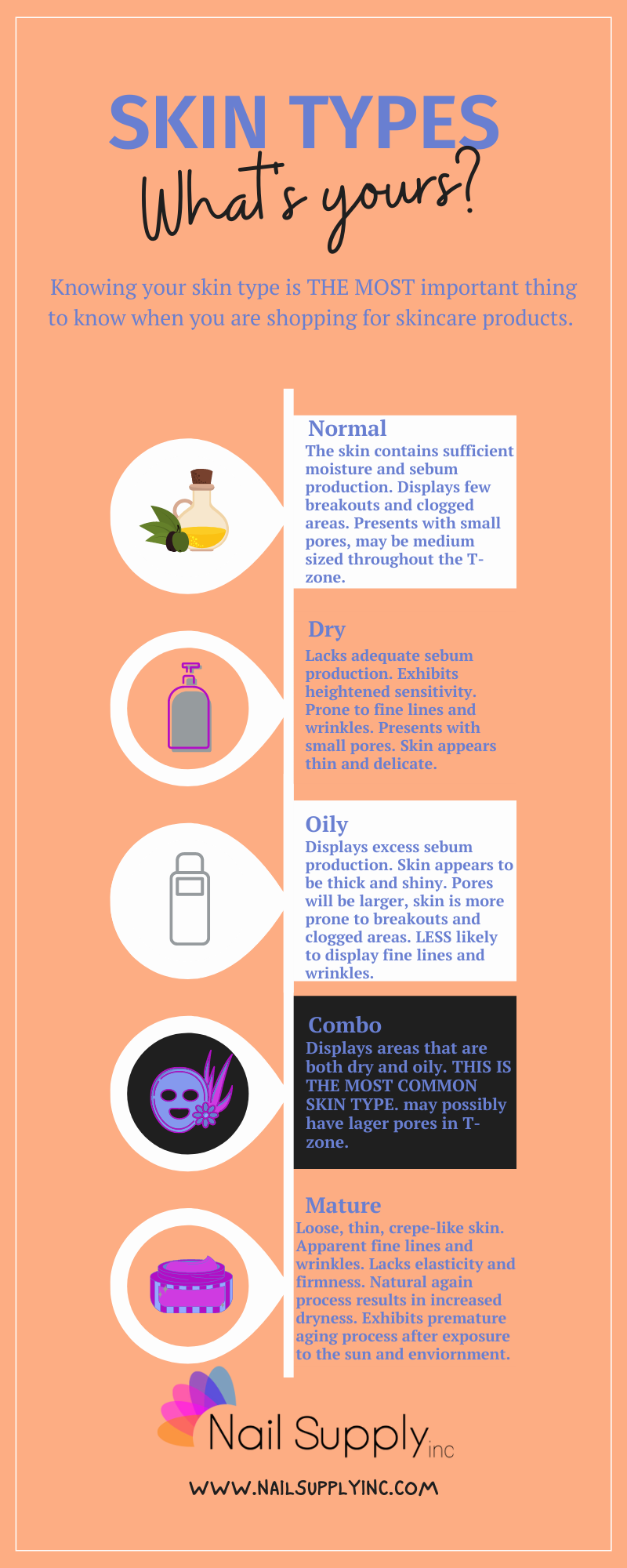
As I mentioned in my first skincare blog, I said that the first step to any good skin care routine is to know your skin type. Also when you are preparing a facial for a client, you want to know what skin type they have.
For yourself, it’s easy to figure out which skin type you fall into. Think about how your skin feels and acts (without any makeup or product) a few hours after getting out of the shower. Your skin a little greasy or shiny? You probably have more oily skin. Feels dry and tight and maybe looks a little flakey? Your skin is probably dry. Have some dry skin and some oily skin (T-zone) Combination skin is the category you’d fall under. None of these sound like your skin? You probably have normal skin. Knowing your skin will help steer you toward products that will manage dryness and oiliness while effectively taking care of any other skin concerns you have. If you notice that your skin is easily irritated when you use certain products, have any type of reaction, or have a skin condition (i.e. eczema, psoriasis, rosacea), you may have sensitive skin. People with sensitive skin can also have oily, dry, combination, or normal skin, but may need to take extra care in selecting products that don’t cause irritation or exacerbate skin conditions.
For each skin type there is, there is a type there are different active ingredients or activities you should be keeping an eye out for when you are picking out the products for your skin.
If you have oily skin, more than likely your skin is dehydrated. Your skin knows when it’s dehydrated and starts producing oil to compensate, making it just as important to keep your skin moisturized as well as manage oil production. Some of the actives in products made for oily skin can be very drying if not used properly. Some you should consider if you have oily skin include: salicylic acid, niacinamide, hyaluronic acid, vitamin A (retinoid or retinol), glycolic acid, and benzoyl peroxide. There are others but these are some of the most common. Most of these ingredients are great for managing oil production, with these types of ingredients MAKE SURE YOU ARE WEARING SPF AND MOISTURIZER EVERYDAY! Just because your face may feel like you don’t need to wear them, over time, that retinol you might be using can make your skin photosensitive or could make your skin very dry and irritated introducing a new set of problems.
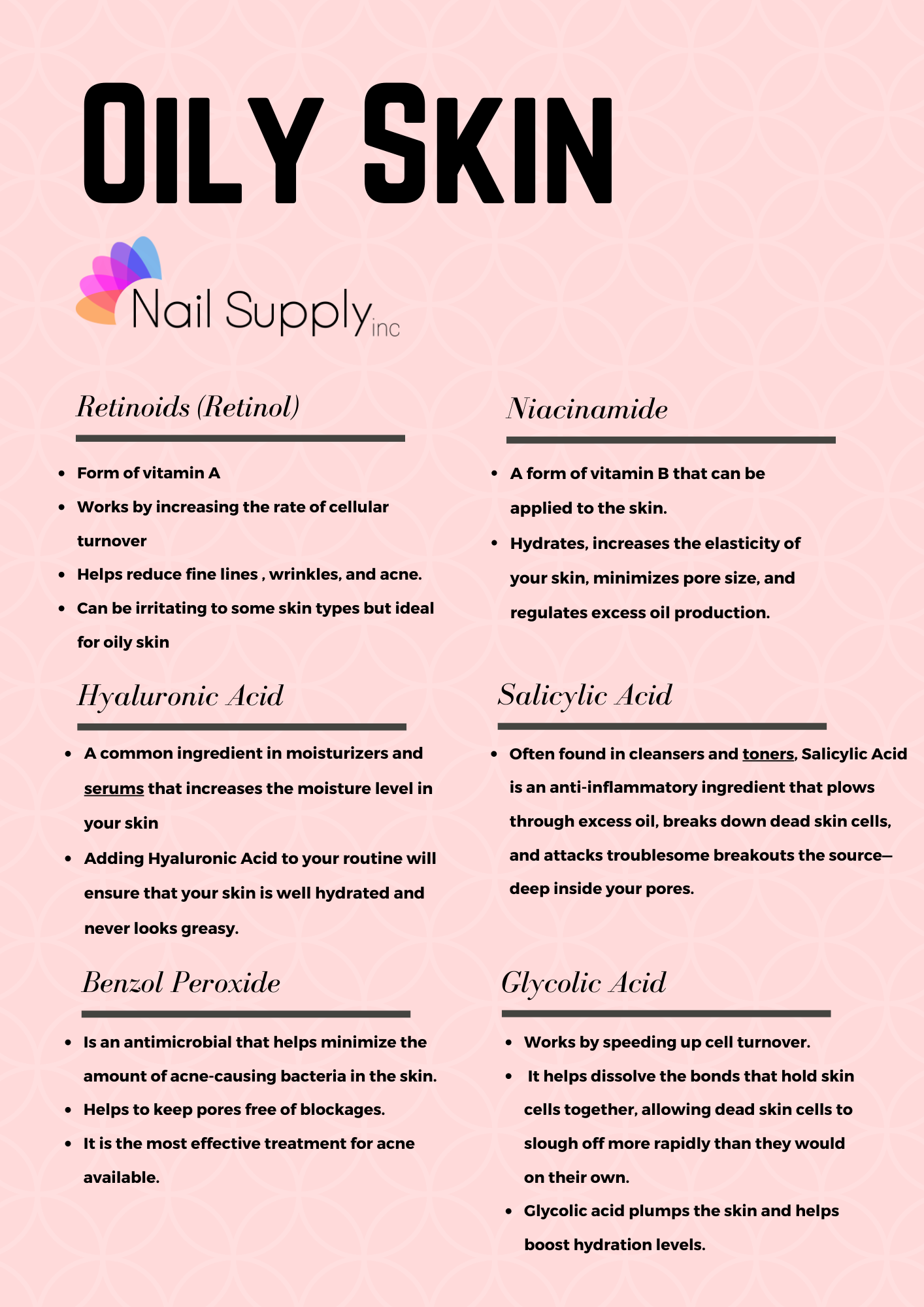
If your skin is more on the dry side, some of the actives that I mentioned before will not be good ones for your skin. You don’t need any help managing the amount of oil being produced by your skin. Some actives I recommend you try: hyaluronic acid, ceramide, lactic acid, glycerin, Aloe Vera, and vitamin E. These ingredients are going to focus on keeping the moisture in your skin. Also when picking an exfoliant, pick a gentle chemical exfoliant (AHA) rather than a manual one. Your skin is already sensitive due to lack of moisture, you could really do some damage if you were to then scrub with abrasives. Also using an SPF and a moisturizer everyday will help keep moisture in the skin.
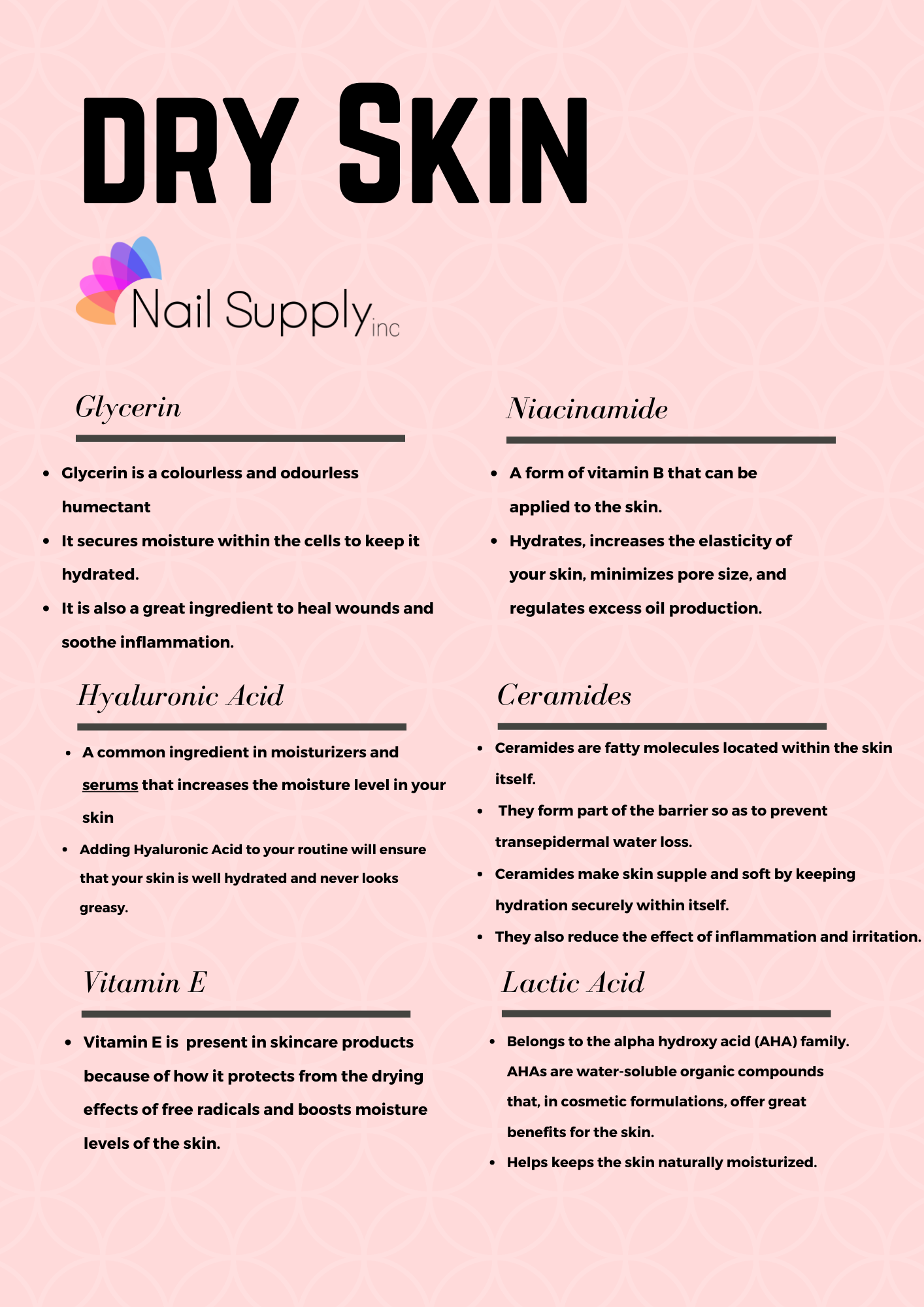
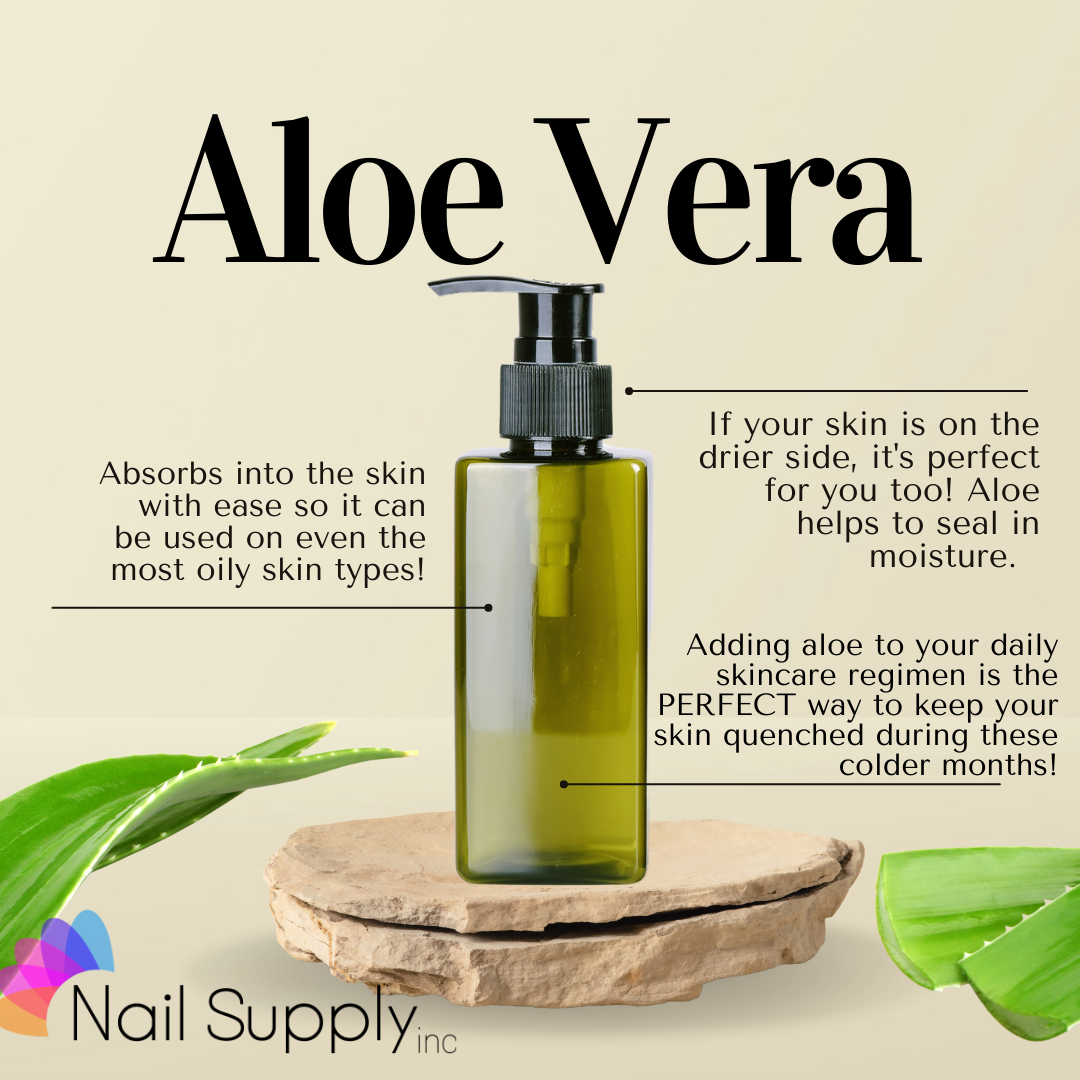
Now, for those of us with combination skin, I can tell you from experience that finding products that fit perfectly with our skin type can be tricky. You should take extra care when using some of the actives used for oily skin because that can make the dry spots you have… more dry. Placement of the different products can also help with keeping those ingredients from getting to an area that doesn’t need it. Typically those who have combination skin usually find that their oiliest area on their face is the T-zone. (Across the forehead, down the nose to the chin.) So using those more drying ingredients in that area will not irritate the other parts of your face that don’t need them.
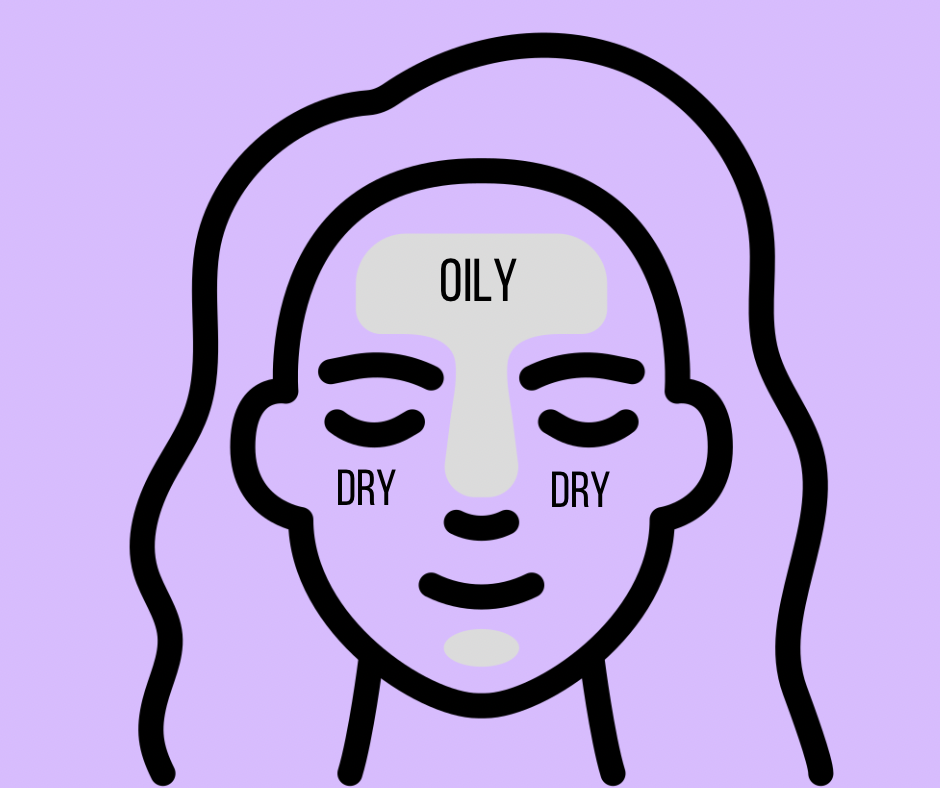
If you have normal skin, you guys have it pretty good. You are not experiencing any excess dryness or over production of oil, so the only thing you need to worry about is keeping your skin that way. Any of the active ingredients I have mentioned for the other skin types, you have the green light to use. As long as you use them correctly and follow up with SPF and moisturizer, of course.
If you are having trouble trying to nail down your skin type or have trouble determining that of your client’s, shoot me an email because I would love to help!
As always, I am sending you all of the good vibes, energies and LOVE! Next week, we are talking about aging skin and the active ingredients you should be looking for! Stay tuned for next week's SKINTERVENTION!

